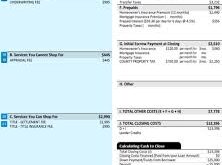Mortgage Insurance Meaning: Understanding How It Works. Mortgage insurance is a financial safeguard that protects lenders in case borrowers default on their home loans. It is commonly required when a homebuyer makes a down payment of less than 20% of the home’s purchase price. Mortgage insurance can come in different forms, including private mortgage insurance (PMI) for conventional loans and government-backed mortgage insurance for FHA, VA, and USDA loans.
How Mortgage Insurance Works
Mortgage insurance allows borrowers to secure home loans with a lower down payment. In exchange, lenders require borrowers to pay insurance premiums, which can be included in monthly mortgage payments, paid upfront, or both. If the borrower fails to meet loan obligations, the insurance covers part of the lender’s losses.
Types of Mortgage Insurance
- Private Mortgage Insurance (PMI): Used for conventional loans with down payments below 20%.
- FHA Mortgage Insurance Premium (MIP): Required for FHA loans, with both upfront and monthly premiums.
- VA Loan Funding Fee: A one-time fee for VA loans in place of traditional mortgage insurance.
- USDA Loan Guarantee Fee: A combination of upfront and annual fees for USDA loans.
Pros and Cons of Mortgage Insurance
Pros:
- Allows borrowers to buy homes with a lower down payment.
- Provides lenders with security, increasing mortgage approval chances.
- Some mortgage insurance can be canceled after reaching 20% equity.
Cons:
- Increases monthly mortgage payments.
- May require upfront costs in addition to ongoing premiums.
- Certain types (like FHA MIP) cannot be removed unless the loan is refinanced.
How to Avoid or Reduce Mortgage Insurance Costs
- Make a larger down payment (20% or more).
- Choose lender-paid mortgage insurance (LPMI), which may result in higher interest rates but no monthly premium.
- Opt for VA or USDA loans if eligible, as they have different insurance structures.
- Request PMI cancellation once you reach 20% home equity.
10 Tips for Managing Mortgage Insurance Costs
- Compare lenders and mortgage insurance rates before committing.
- Aim for a 20% down payment if financially feasible.
- Consider refinancing to remove mortgage insurance if eligible.
- Monitor home equity growth to request PMI cancellation early.
- Check for lender-paid mortgage insurance (LPMI) options.
- Use extra payments to reduce loan balance faster.
- Choose a loan type with lower insurance costs if eligible.
- Improve your credit score to secure better loan terms.
- Ask about potential discounts or waivers on upfront fees.
- Work with a financial advisor to assess long-term savings.
10 Frequently Asked Questions (FAQs)
1. Can I avoid mortgage insurance altogether? Yes, by making a 20% or larger down payment or choosing a loan type that does not require mortgage insurance.
2. How long do I have to pay mortgage insurance? For conventional loans, PMI can be removed after reaching 20% equity. FHA MIP may last the life of the loan unless refinanced.
3. Is mortgage insurance tax-deductible? In some cases, PMI premiums may be tax-deductible. Check with a tax advisor for current regulations.
4. Does mortgage insurance protect the borrower? No, it protects the lender. Borrowers should consider homeowners’ insurance for personal coverage.
5. Can mortgage insurance be refunded? Some FHA upfront MIP may be refunded if the loan is refinanced within a certain period.
6. Is mortgage insurance required for VA loans? No, but VA loans require a funding fee instead.
7. How does home equity affect mortgage insurance? Reaching 20% home equity allows for PMI removal in conventional loans.
8. Can I pay mortgage insurance upfront? Yes, some lenders offer the option to pay a lump sum upfront instead of monthly premiums.
9. What happens if I stop paying mortgage insurance? Failure to pay could result in loan default and potential foreclosure.
10. Can first-time homebuyers get assistance with mortgage insurance? Yes, some programs help reduce or cover mortgage insurance costs for first-time buyers.
Conclusion
Mortgage insurance enables homebuyers to secure loans with lower down payments, making homeownership more accessible. While it increases costs, there are ways to manage or eliminate it over time. By understanding the types, benefits, and strategies to reduce expenses, borrowers can make informed financial decisions that align with their homeownership goals.
 mortgage.kbk.news
mortgage.kbk.news
